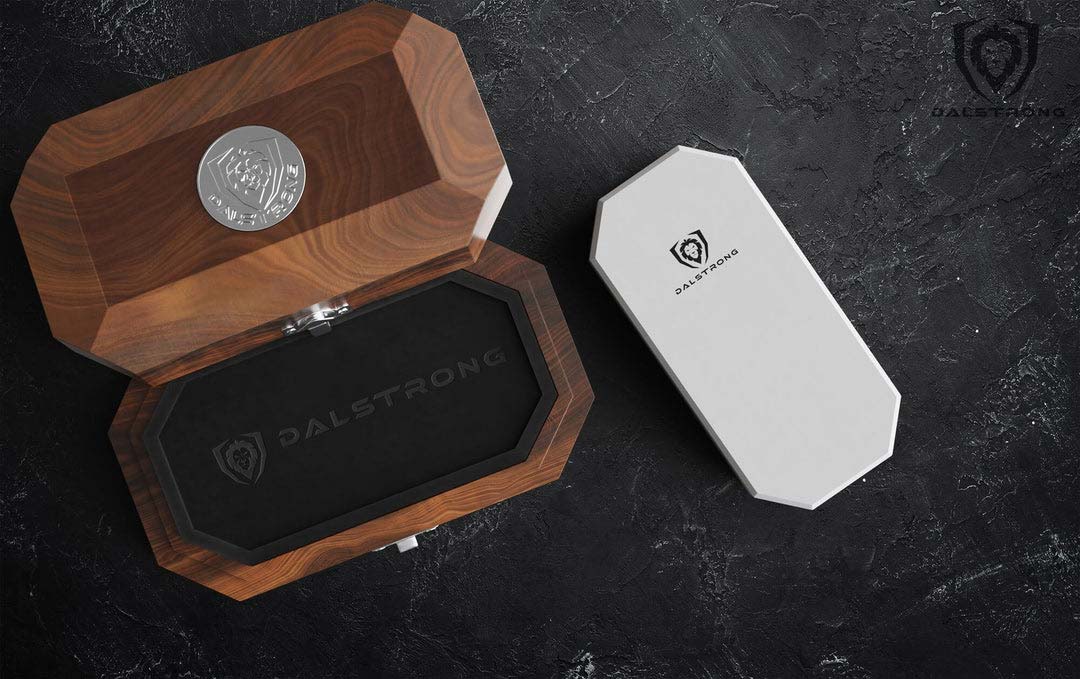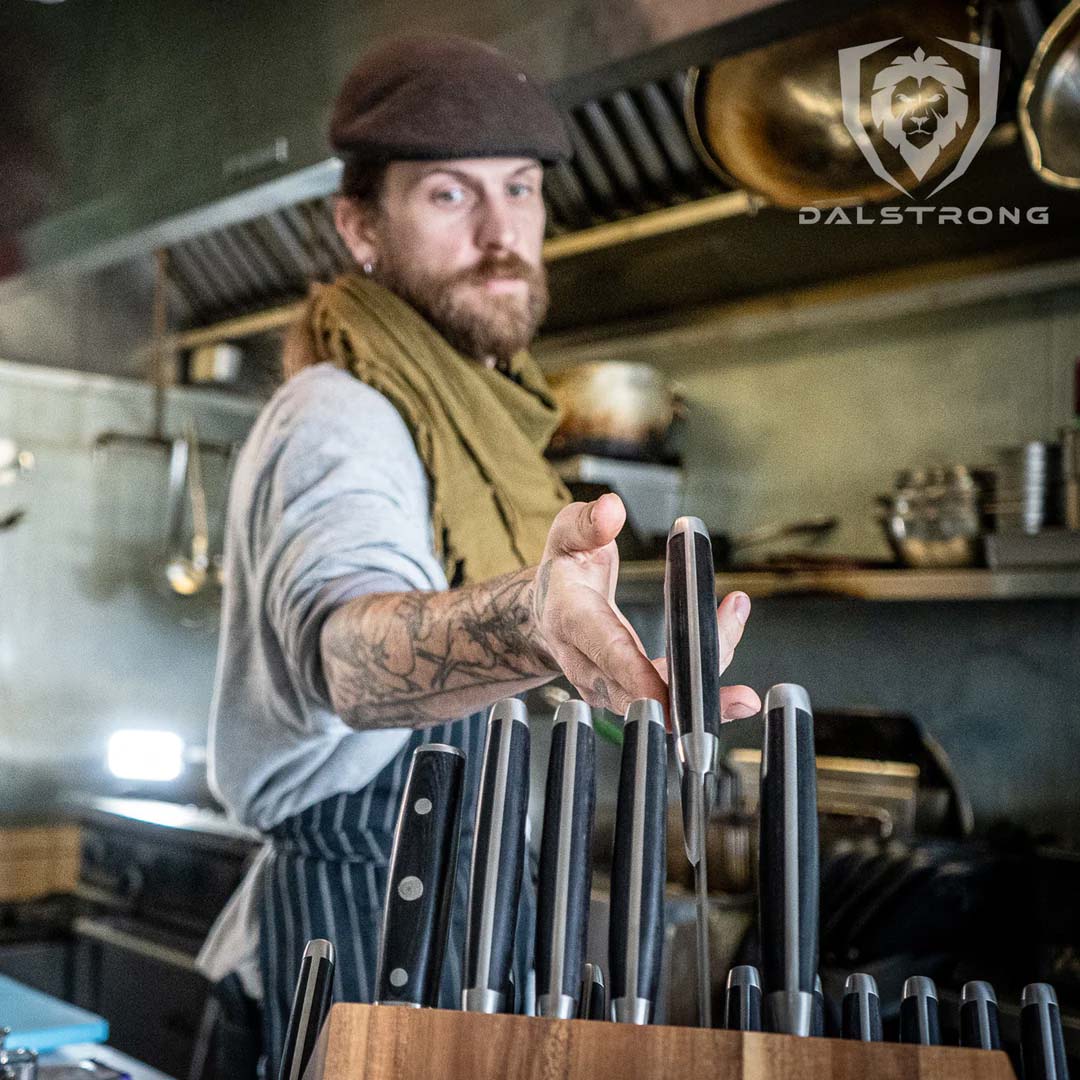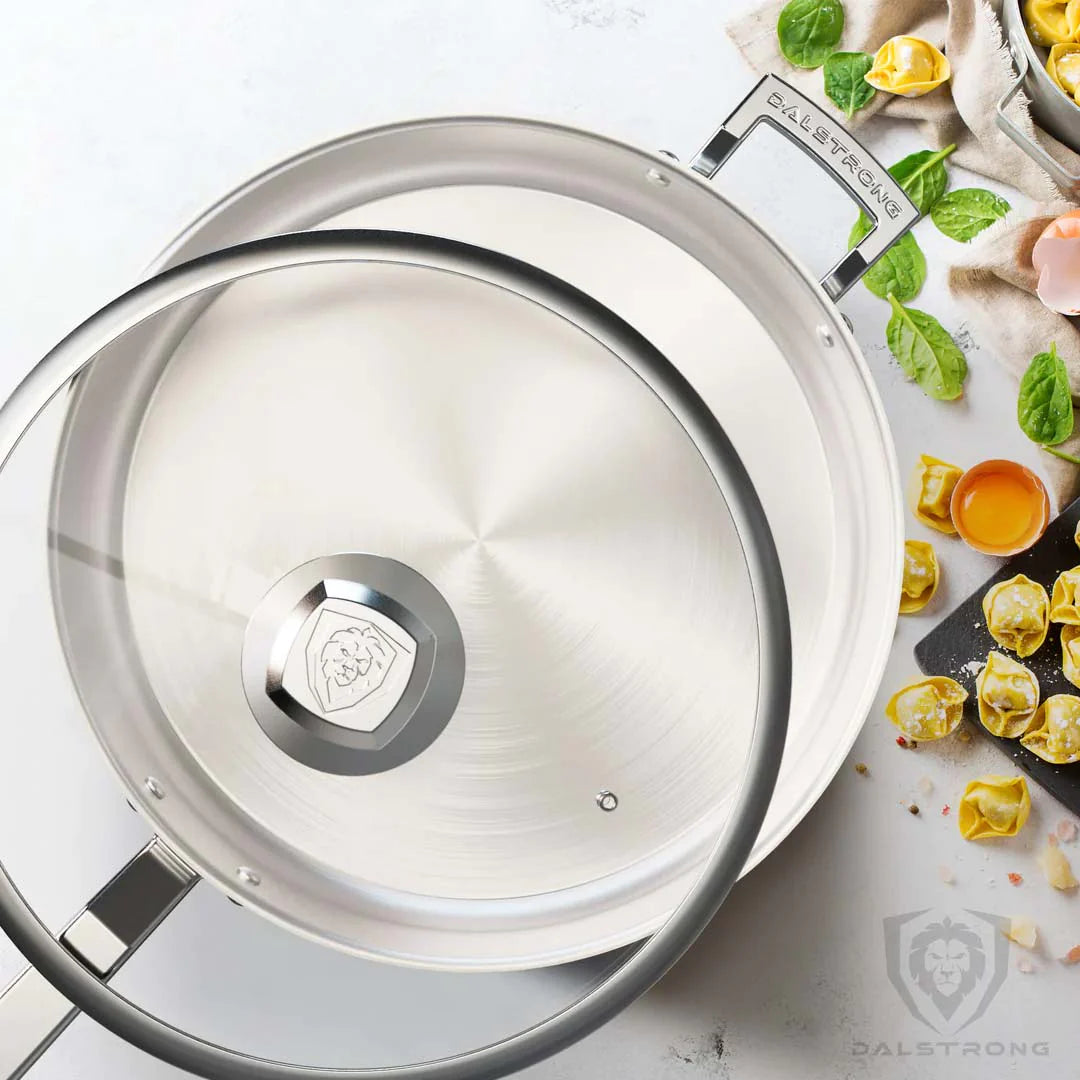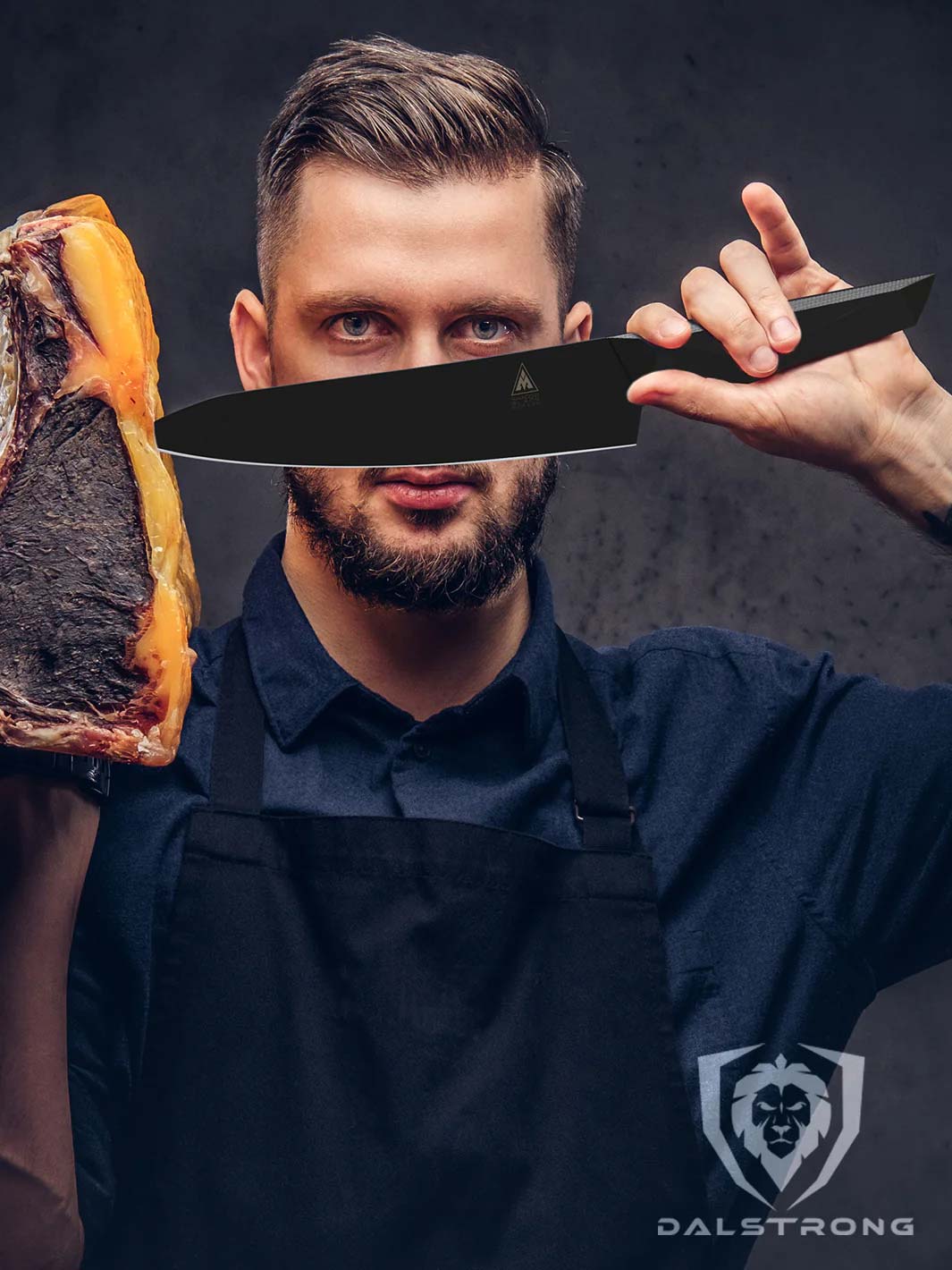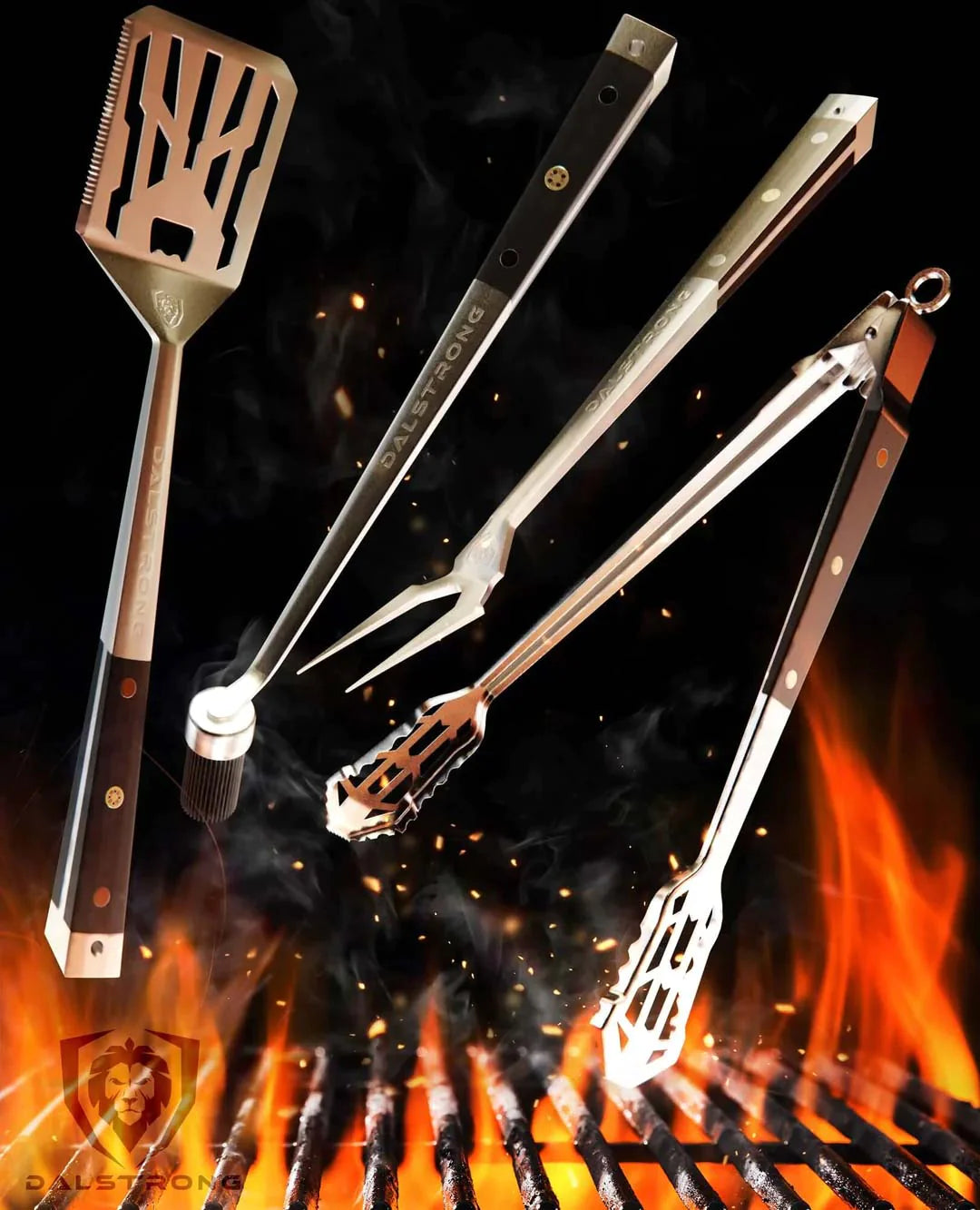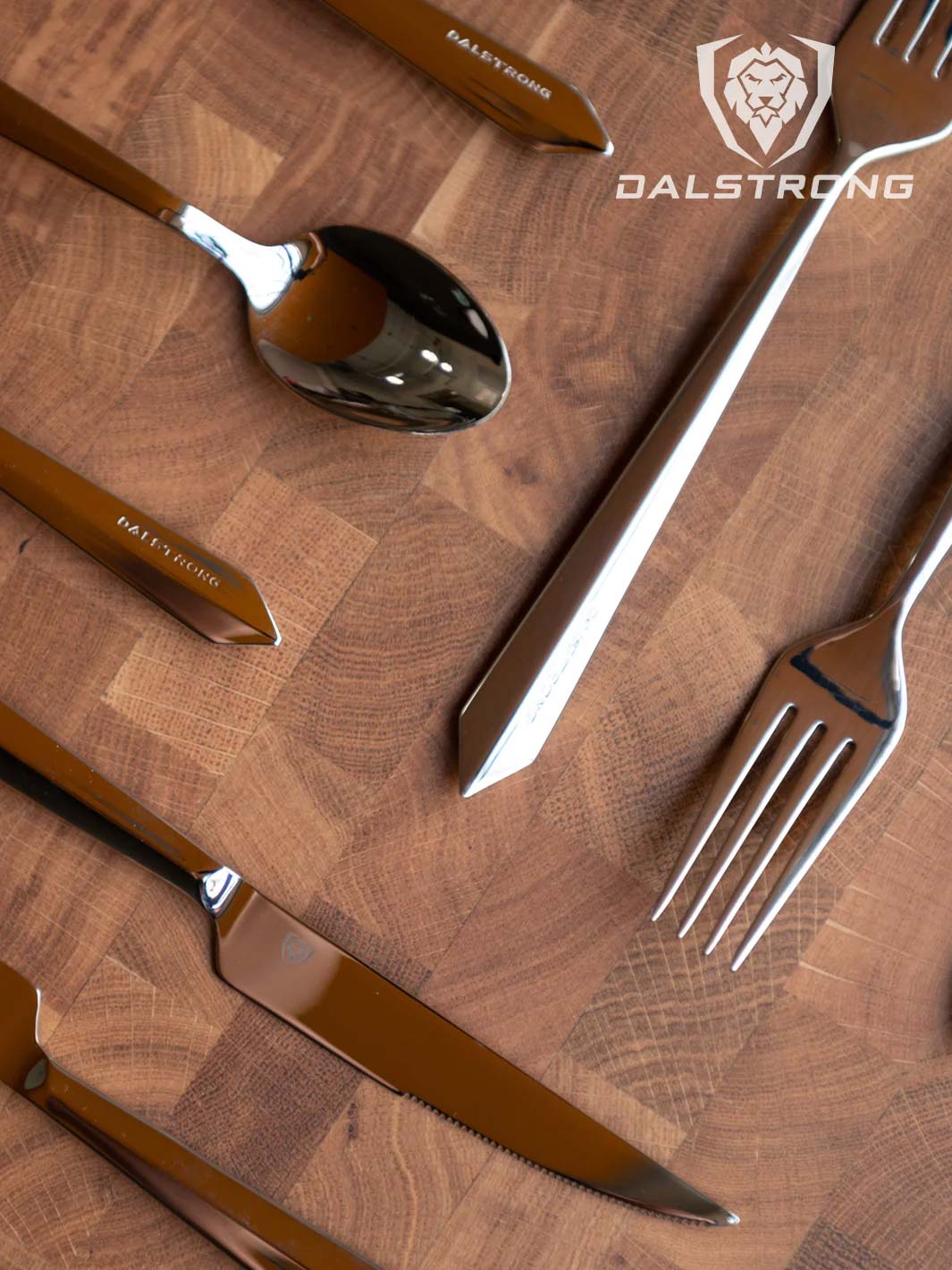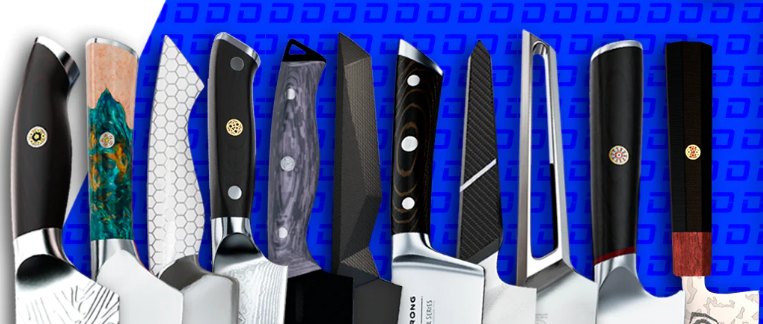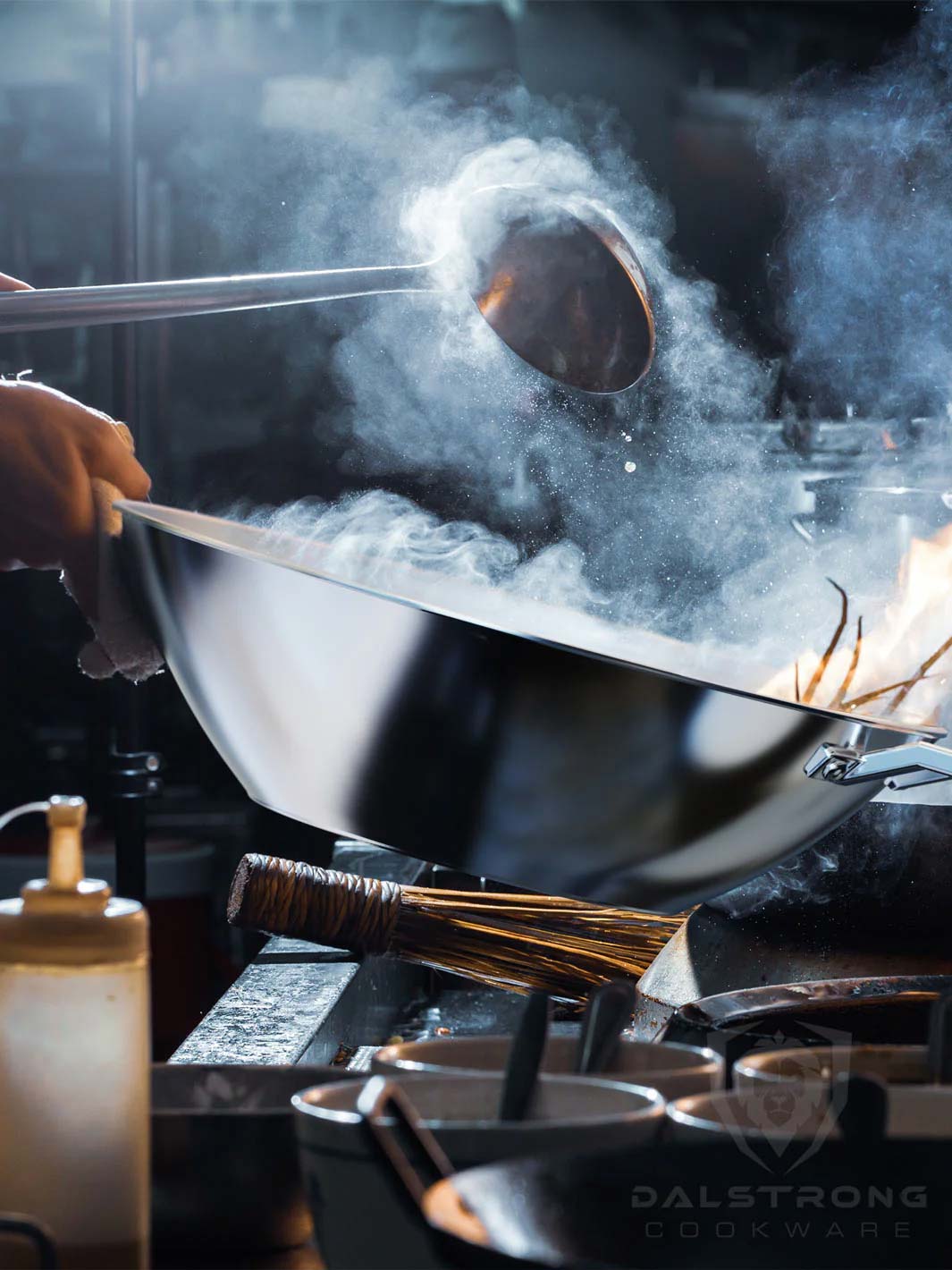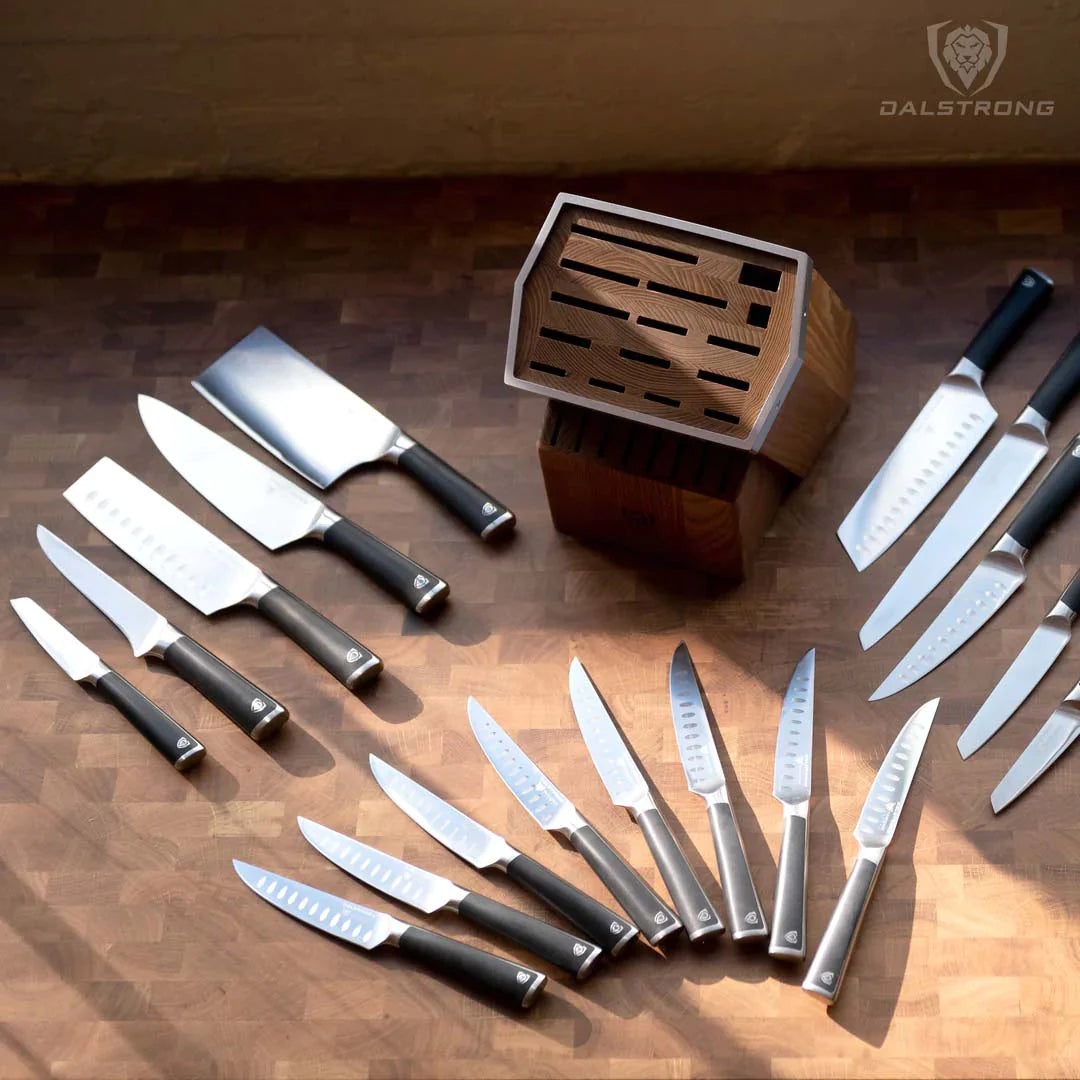Best Honing Steel
Best Honing Steel
- Dalstrong Ceramic Honing Rod- 10" - Scratch-Free Ceramic Coating
- Shadow Black Series 9" Honing Steel - NSF Certified
- Gladiator Series 10" Honing Steel
1. Why Is It Important To Own A Honing Steel?
Shadow Black Series 9'' Honing Steel
If you’re familiar with cooking shows, you’ve probably seen professional chefs sliding their knives against a metal rod many, many times. Most people would think that what they’re doing is sharpening a knife but what they’re actually doing is honing it. There’s a big difference between the two (we’ll cover that later) but both help increase the effectiveness of your knife.
While not a proper sharpening method per se, the honing steel, or honing rod, is a must on any chef’s knife block, playing a key role in your knife maintenance routine. For starters, it can enhance your knife’s day-to-day performance and help you reduce the frequency of your sharpening sessions. This is essential, because sharpening shouldn’t be done that often but you still need to bring dull knives back to life.
It also helps the blade’s edge regain its original position, straightening it without shaving off a considerable amount of metal from the blade. Honing your chef’s knife or kitchen knife regularly will greatly improve its performance and its overall sharpness. Because, as we all know, a sharp edge is vital to avoid accidents on your chopping board.
2. Best Honing Steel To Buy
1. Dalstrong Ceramic Honing Rod- 10" - Scratch-Free Ceramic Coating ($49.99)

Built from high carbon steel and finished with a sleek, scratch-free ceramic coating, this honing steel will help you keep the edge of your knife razor-sharp and is perfect for ceramic sharpening. Specially designed to work with valuable steels of high Rockwell Hardness such as Japanese knives, it’s also perfect in combination with our own Shogun, Phantom, Omega, and Quantum Series.
Pros:
- At 10”, it’s large enough to work with most sized knives and small enough to perfectly fit inside your knife roll or knife block.
- Military-grade, triple-riveted black G10 handle for maximum durability.
- Gorgeous copper mosaic adds extra distinction to this kitchen tool.
Cons:
- The ceramic coating might not be to everyone’s liking.
- If your knife collection is on the larger side, you might wanna opt for a longer honing steel.
- A ceramic rod (also known as sharpening rods) actually removes metal from the blade, so handle with care.
2. Shadow Black Series 9" Honing Steel - NSF Certified ($49.99)
The Shadow Black Series is known for pushing the boundaries of culinary technology and this honing steel is no exception. Its modern design features an ergonomic, fiber-resin military-grade G10 handle that just tucks into your palm and a handcrafted single piece of high-carbon steel with a corrosion-resistant chrome plating. Honing and re-aligning your blades has never looked this good.
Pros:
- State-of-the-art design.
- The handle is impervious to heat, cold, and moisture.
- Easy to clean.
Cons:
- Some chefs might find its avant-garde looks a little too out there.
- Unlike the other honing steels in this list, this one’s on the shorter side.
- The price point might be a bit high for some home cooks.
3. Gladiator Series 10" Honing Steel ($39.67)
We complete this list with a top of the line performer. The Gladiator Series 10" Honing Steel is an absolute gem of a honing tool, featuring a single piece of high carbon ThyssenKrupp German steel at 55 Rockwell that’s both durable and stain resistant and a beautiful ergonomic handle made from Spanish pakkawood.
If you’re looking for a long-lasting solution to keep the blade of your knife factory-sharp while getting the most bang for your buck, then look no further than the Gladiator honing steel.
Pros:
- Optimal size for working with most sized knives.
- Excellent price-quality relationship.
- Triple-riveted handle for more durability.
Cons:
- Chefs with a collection of large knives might prefer a longer honing steel.
- If you own a varied assortment of Japanese knives, you might wanna go with a diamond or ceramic honing steel.
3. What Is A Honing Steel?
Shadow Black Series 9'' Honing Steel
The honing steel, also called honing rod, is a culinary tool used to straighten the blade of your knife. Like its name indicates, it consists of a rod that is usually made of stainless steel, ceramic, or diamond, which can help re-align the “teeth” of your blade after regular use.
And while it’s also mistakenly called a knife sharpening steel, this is a misnomer - the honing steel doesn’t actually sharpen knives; it simply helps keep their blade sharp in between sharpening. For that purpose, there are many sharpening methods available such as a sharpening stone or an electric knife sharpener. These methods actually shave off a small quantity of metal from the blade of your knife.
For more information on different sharpening methods, check out our Best Knife Sharpener article here.
4. Types Of Honing Steel
Shadow Black Series 9'' Honing Steel
Stainless steel
In general, most honing steels are made from this material. A steel hone usually features longitudinal ridges running along the surface of a slender stick-like rod. The only consideration you should have in mind with steel rods is that you should never try to hone a knife made from harder metal than the steel sharpener itself. This can greatly damage the blade edge.
Ceramic
Ceramic honing rods became incredibly popular during the 1980s. Featuring a smooth ceramic surface, they’re not only capable of honing your blade but they also possess a modest sharpening effect, removing minimal amounts of knife steel.
Diamond
A diamond sharpening steel is perhaps the most effective one out of the three. It’s also extremely abrasive, so try not to use it on your blades on a daily basis. If you’re looking to buy yourself some time before your next sharpening session, the diamond hone should be your weapon of choice.
5. What Does A Honing Steel Do?
Shadow Black Series 9'' Honing Steel
The process is actually pretty straightforward. After a certain amount of use, the microscopic “teeth” of your knife get bent over, catching little pieces of the food you’re cutting. When this happens, you’ll notice that the blunt knife starts offering some resistance. By running the blade of your knife against a honing steel, you can re-align the curled knife edge back into shape, helping it regain some of its original cutting power.
Note: Unlike sharpening, honing with a stainless steel honing rod doesn’t actually scrape away metal from the blade of your knife and can be done on a daily basis. This doesn’t necessarily apply to ceramic or diamond honing steels, which are a bit more abrasive.
Check out our handy guide for how to sharpen a knife here.
Need to sharpen a serrated knife? No problem, check this one out instead.
6. What Is The Difference Between A Honing Steel And A Sharpening Steel?
Gladiator Series 10'' Honing Steel
Basically, honing steel and sharpening steel are two terms that are used to describe the same thing. What’s really important here is the difference between honing and sharpening.
By honing your knife you realign the microscopic “teeth” in the blade, helping it stay sharper for longer, but you definitely won’t be able to bring a dull knife back to life. On the other hand, by sharpening a knife you remove a tiny amount of knife steel from the blade, creating a new knife’s edge. Unlike honing, which should be done regularly, you only want to sharpen your knife once every couple of months.
It’s also worthwhile mentioning that while all honing rods are considered honing steels, only ceramic and diamond steels fall into the category of sharpening rod, mainly due to their modest sharpening properties.
7. Does A Honing Steel Wear Out?

10'' Ceramic Honing Rod
This is a very important question, since you should be busting out that honing steel pretty much every time you use your knife.
Generally speaking, most quality honing steels are made from highly durable metal and are robust enough to last a few decades, but that will also depend on usage. Although they’re meant to be used frequently, you only need to slide the knife against the surface of the honing a few times in order to re-align the blade. If you need more than that, then it’s probably time for a sharpening session.
A quick method to find out if your honing steel is losing its effectiveness is to run your fingers along the rod and see if you can feel the groves on the steel. If it feels smooth to the touch, that means that you’ll probably have to get a new one.
Of course, our advice is to invest in a high quality honing steel in order to avoid having to replace it every few years.
8. What Grit is a honing steel?

10'' Ceramic Honing Rod
In the world of knife sharpening and honing, Grit is a term used to describe the coarseness of the material you’re working with. It is important to know the grit of a honing steel in order to determine the effect it’ll have on your knife. The rule here is the lower the grit, the coarser it is.
In general, ceramic honing steels have a finer grit than the steel ones. And, as we’ve established before, they also possess a slight sharpening effect. The difference between honing and sharpening will basically depend on the grit of the ceramic hone.
In order to hone your knife’s blade, you need a grit around 2000. If the grit falls anywhere between 400 and 800, you’ll be sharpening instead of honing.
9. Dalstrong Knife Sharpening Service
Dalstrong Knife Sharpening Service
All great chefs know: you’re only as good as your knives. Every Dalstrong knife is forged with premium materials and expert engineering to stay sharp for as long as possible. But with rigorous use in the kitchen, even the highest quality knives will lose their sharpness with time.
With our brand new professional knife sharpening service, you can send in 5 or 7 knives at a time for sharpening. You’ll receive fully sharpened knives in just 4-7 days from the time we receive them.
Shop Dalstrong Honing Steel Today
You can also check in with our Expert Knife Finder Quiz and get specific recommendations based on your needs.
Written by Pablo Perez
When he's not adding way too much butter to his recipes, Pablo likes to write about knives, music, food, cinema, and all of the other things that make life worth living.
















































































































































































































